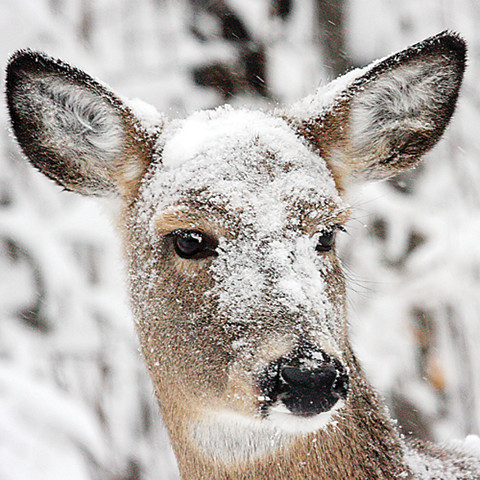Support the Timberjay by making a donation.
Tough winter could start to affect deer population
Winter severity index continues to climb
REGIONAL— Weeks of deepening snowpack and intense cold are beginning to push this season’s Winter Severity Index, or WSI, for whitetail deer into the above-average range for this time of year. …
This item is available in full to subscribers.
Attention subscribers
To continue reading, you will need to either log in to your subscriber account, or purchase a new subscription.
If you are a current print subscriber, you can set up a free website account and connect your subscription to it by clicking here.
If you are a digital subscriber with an active, online-only subscription then you already have an account here. Just reset your password if you've not yet logged in to your account on this new site.
Otherwise, click here to view your options for subscribing.
Please log in to continue |
Tough winter could start to affect deer population
Winter severity index continues to climb
REGIONAL— Weeks of deepening snowpack and intense cold are beginning to push this season’s Winter Severity Index, or WSI, for whitetail deer into the above-average range for this time of year. And with an extended forecast calling for below zero temperatures for at least the next week, it appears increasingly likely this winter’s severity index could reach the severe category, where deer mortality could become significant.
“Most of northern St. Louis County has received 30-plus inches of snow in February alone,” said DNR Tower Area Wildlife Manager Tom Rusch this week. That’s left most parts of the area with at least 25-30 inches of snow on the ground, with depths of 30-40 inches in northern Lake County.
The depth and duration of deep snow cover is the most important factor in deer winter survival in northern Minnesota, according to Rusch. Already, said Rusch, conditions will likely lead to above normal deer mortality. “If deep snow persists into April, mortality will be severe,” Rusch predicts.
As of March 1, the WSI readings around northern St. Louis and Lake counties ranged from 95 to about 110. That’s getting close to the 110-120 WSI reading that is considered average for the Tower area for the entire winter. Yet with no warm-up in the extended forecast, the WSI reading is certain to climb well above the average range this year. The WSI adds a point for every day with a below-zero temperature reading and a point for every day with a snow depth of 15 inches or greater. Given the current extended forecast, the WSI reading could well climb as much as 15-20 points in the next ten days alone. Longer term weather forecasts put out by the National Climate Prediction Center hint at continued below-normal temperatures in most of Minnesota into the second half of March.
Generally, winters where the WSI reaches 180 or above are considered severe and can lead to significant winter mortality for deer. Whether this winter reaches the severe level is dependent on the weather over the next several weeks, notes Rusch.






